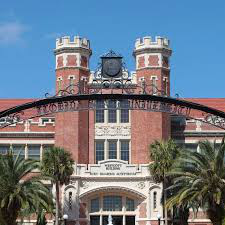Speaker
Description
The FROST experiment at Jefferson Lab used the CLAS detector in Hall B with the intention of performing a complete and over-determined measurement of the polarization observables associated with strangeness photoproduction, in combination with data from previous JLab experiments as part of the N* program. This was achieved by utilizing the FROST polarized target in conjunction with polarized photon beams, allowing direct measurement of beam-target double polarization observables.
Although sufficient observables have now been measured to enable the associated reaction amplitudes to be determined, facilitating a near model-independent partial wave analysis, global data in strangeness channels is a couple of orders of magnitude smaller than pion photoproduction, so some ambiguities remain. These can be resolved by measuring observables spanning combinations of beam, target and recoil polarization. Furthermore, the recent revision to the value of the weak decay parameter makes a wider range of observable measurements even more desirable as a cross-check of interpretations of previous data. Studies on strangeness photoproduction reactions may provide evidence of previously undetermined resonances, due to the different coupling strengths of these states to other reaction channels.
The G polarization observable is one of the beam-target double polarization observables, associated with a longitudinally polarized target and a linearly polarized photon beam, and its measurement for the strangeness reaction $\gamma p \rightarrow K^{+}\Lambda$ is the focus of the work presented.
| speaker affiliation | University of York, York, UK |
|---|

